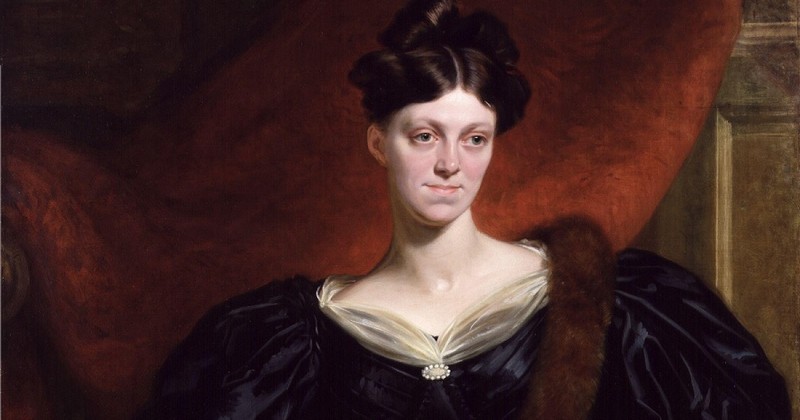Harriet Martineau: biography of this philosopher

Harriet Martineau was a philosopher and women's rights activist. Let's see what her life was like.
History is full of feminist women who already took their first steps in the struggle for women's rights. This is the case of Harriet Martineau, a British writer who was also a philosopher, social activist and sociologist. Harriet, in addition, actively defended the abolitionist movement, and also fought for the rights of the poor and slaves.
In this article we will summarize a biography of Harriet Martineau: her origins and studies, her philosophy, trajectory and the importance of her work..
Harriet Martineau biography: who was she?
Harriet Martineau was a British writer and feminist of the 19th century, and also a philosopher, social activist and sociologist.who was very interested in political economy. In addition, she is considered by some experts to be the first sociologist in history.
She was a woman who actively supported the establishment of laws for the poor, as well as the abolitionist movement.. This movement tried to defend the annulment of laws or customs that were considered to violate people's rights and ethics.
As for her ideology, Harriet was very much in favor of "laissez-faire" (the "laissez-faire", which implies refraining from a direction or mandate), although she also defended the right to strike and to unionize.
Birth and youth
Harriet Martineau was born in England on June 12, 1802 (specifically, in Norwick). Daughter of French Huguenots (a type of Protestants), her father was a well-placed businessman, so that she received a very good education.
This education was far superior to that received by most women of the time. In addition to studying subjects such as physics, mathematics, history and astronomy, she learned several languages.
Woman of letters
Later, Harriet decided to study philosophy and social sciences. With the death of her father in 1825, she had to start working as an embroiderer, but she combined this with writing for newspapers, through which she achieved a certain prestige. For example, she collaborated for several years in the Daily Newswhere she wrote more than 1,000 articles.
In 1832, at the age of 30, he wrote a collection of 25 novels, he produced a collection of 25 novelsentitled Illustrations of Political Economyin which he presented his ideas and explanations regarding the consumption of wealth, its production and distribution, as well as its implications for the poor.
In addition, was very interested in the works of Jane Marcet (English writer and science popularizer), which got him interested in Political Economy.. This theme was very recurrent in his work.
His work in sociology
As we have already begun to see, between 1819 and 1830, Harriet Martineau began to contribute to the field of sociology, publishing in local newspapers. Remarkably, in 1821, she openly published in the Monthly Re she openly published in the Monthly Repository newspaper her rejection of the unequal treatment of women..
In this way, her feminist ideas tried to extol the rights and capabilities of women, and then began to emerge, through her articles, works and publications.
Her involvement in feminism
It can be said that Harriet Martineau was a feminist fighter, a great defender of women's rights. Her advice or ideas included the idea of equal education for girls and boys.claiming that their intellectual capacities were equal.
In fact, and to give an example, in one of her articles, titled Women's Educationshe explained that the "supposed" differences between women and men were due exclusively to the educational discrimination to which they were subjected. In writing this article, she was inspired by Mary Wollstonecraft, also an English philosopher and writer.
Another example of her feminist ideas is to be found in her defense of women's her defense of a woman's decision not to marry if she wishes to do so. An idea that she also practiced, since she never married.
Travels
Harriet Martineau made important trips that influenced her work and ideology, besides providing her with a wide experience in the field of activism. a wide experience in the field of social activism..
In 1834, Harriet traveled to the United States to support the abolitionist movement, as we saw at the beginning of the article. He stayed there for two years, and that experience prompted him to write the book Society in Americawhich consisted of an exhaustive analysis of analysis of the social strategies surrounding the female figure, slavery and morality..
Another of his important trips was, years later (in 1846), to the Near East, Egypt and the Holy Land. As a result of her experiences there, in 1848 she wrote a new book, entitled Oriental Life. Present and Pastwhere he speculated about the treasures hidden under the sands of those places he visited.
Works
Some of Harriet Martineau's most important works were. were:
- Illustrations of Political Economy, 1832-34
- Poor Laws and Paupers, 1833
- Illustrations of Taxation, 1834.
- Society in America, 1837.
- Letters on the Laws of Man's Nature and Development, 1851
- The Philosophy of Comte, Freely translated and condensed, 1853
- Autobiography, 1837.
Death
At the age of 53, in 1855, Harriet became seriously ill.and set out to write his Autobiographywhich would be published a year after her death (in 1877). In her last days, Harriet continued to write for the Daily Newsuntil she died at the age of 74, on June 27, 1876 in Ambleside (England).
It is said that it was Harriet herself who wrote her obituary, published in the same Daily Newson the day of her death.
Bibliographical references:
-
Freedgood, E. (1995). Banishing Panic: Harriet Martineau and the Popularization of Political Economy. - Victorian Studies, Indiana University Press, 39(1): 33-53.
-
Martineau, H. (2005). How to Observe: Morals and Manners. Kessinger Publishing.
-
O'Brien, D. O. (1989). The classical economists. Madrid: Alianza Universidad.
-
Salazar, M. (2018). Harriet Martineau: A revolutionary of her time. What is economics.
(Updated at Apr 12 / 2024)